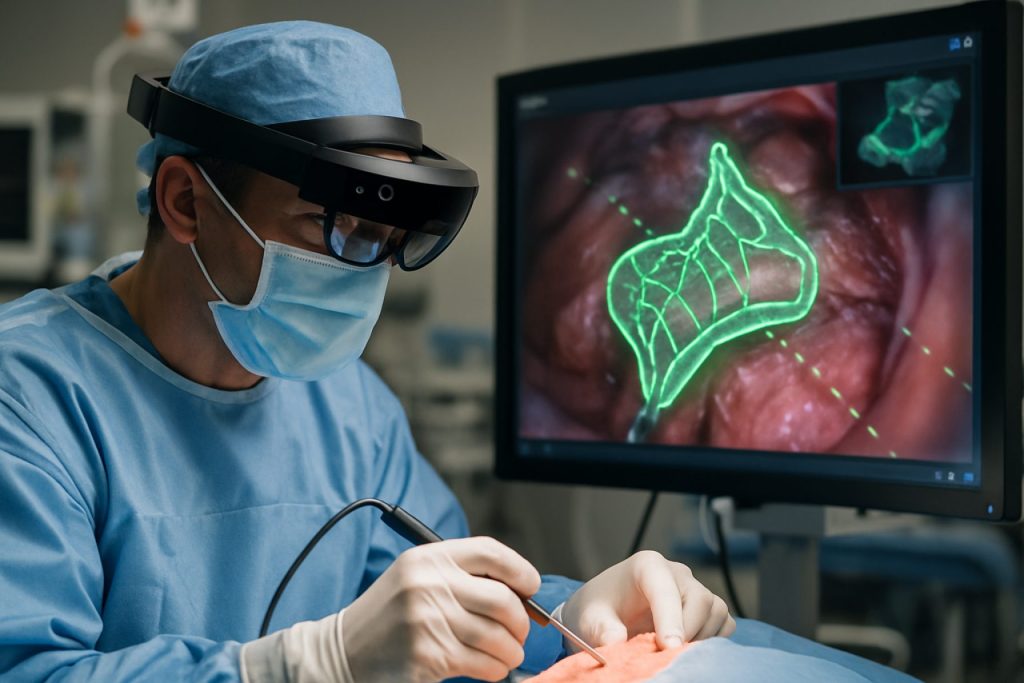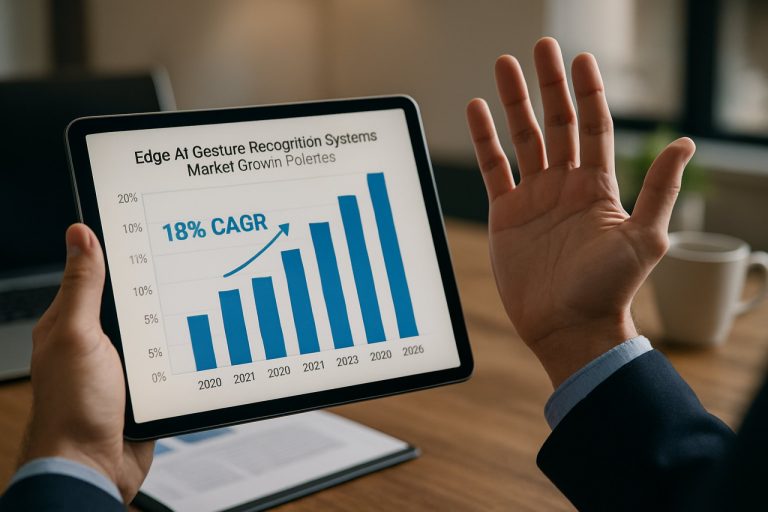
Augmented Surgical Guidance Systems Market Report 2025: In-Depth Analysis of AI Integration, Market Dynamics, and Global Growth Prospects. Discover Key Trends, Forecasts, and Strategic Opportunities Shaping the Industry.
- Executive Summary & Market Overview
- Key Technology Trends in Augmented Surgical Guidance Systems
- Competitive Landscape and Leading Players
- Market Growth Forecasts (2025–2030): CAGR, Revenue, and Volume Analysis
- Regional Market Analysis: North America, Europe, Asia-Pacific, and Rest of World
- Future Outlook: Innovations and Strategic Roadmaps
- Challenges, Risks, and Emerging Opportunities
- Sources & References
Executive Summary & Market Overview
Augmented Surgical Guidance Systems (ASGS) represent a transformative segment within the broader digital health and medical device markets, leveraging augmented reality (AR), artificial intelligence (AI), and advanced imaging to enhance intraoperative visualization, precision, and decision-making. By overlaying digital information—such as anatomical structures, surgical plans, and real-time data—directly onto the surgeon’s field of view, these systems aim to improve surgical outcomes, reduce errors, and shorten procedure times.
As of 2025, the global ASGS market is experiencing robust growth, driven by increasing adoption in minimally invasive and complex surgical procedures, rising demand for improved patient safety, and ongoing technological advancements. According to Fortune Business Insights, the augmented reality in healthcare market is projected to reach over $4.2 billion by 2027, with surgical guidance systems constituting a significant and rapidly expanding subsegment. Key drivers include the proliferation of high-resolution imaging modalities, integration with robotic-assisted surgery platforms, and growing investments from both established medtech companies and innovative startups.
Major players such as Medtronic, Smith+Nephew, and Stryker are actively developing and commercializing ASGS solutions, often in partnership with software and imaging technology firms. These collaborations are accelerating the deployment of next-generation systems capable of real-time 3D mapping, navigation, and personalized surgical planning. For example, Brainlab and Augmedics have introduced AR-based navigation platforms that are gaining traction in neurosurgery and orthopedic procedures.
Regionally, North America and Europe lead in adoption due to advanced healthcare infrastructure, favorable reimbursement policies, and a high concentration of skilled surgeons. However, Asia-Pacific is expected to witness the fastest growth, fueled by expanding healthcare investments and increasing awareness of the benefits of digital surgery.
- Key Trends: Integration with AI for predictive analytics, cloud-based data sharing, and interoperability with hospital information systems.
- Challenges: High initial costs, regulatory hurdles, and the need for extensive clinical validation.
- Outlook: The ASGS market is poised for double-digit CAGR through 2025, with ongoing innovation likely to expand indications and drive broader adoption across surgical specialties.
Key Technology Trends in Augmented Surgical Guidance Systems
Augmented Surgical Guidance Systems (ASGS) are rapidly transforming the landscape of operative medicine by integrating advanced visualization, real-time data analytics, and artificial intelligence (AI) into surgical workflows. As of 2025, several key technology trends are shaping the evolution and adoption of these systems, driving improvements in surgical precision, safety, and outcomes.
- AI-Driven Image Analysis and Decision Support: The integration of AI and machine learning algorithms into ASGS is enabling real-time interpretation of complex imaging data. These systems can now automatically segment anatomical structures, highlight critical regions, and suggest optimal surgical paths, reducing cognitive load on surgeons and minimizing human error. Companies like Intuitive Surgical and Medtronic are at the forefront, embedding AI-powered analytics into their platforms.
- Mixed Reality and 3D Visualization: The adoption of mixed reality (MR) headsets and 3D holographic displays is enhancing intraoperative visualization. Surgeons can now overlay digital anatomical models directly onto the patient, improving spatial awareness and enabling more precise navigation. Microsoft’s HoloLens and Siemens Healthineers’ AR solutions are notable examples, providing immersive guidance during complex procedures.
- Integration with Robotic Surgery Platforms: ASGS are increasingly being integrated with robotic-assisted surgical systems, allowing for synchronized movement and enhanced control. This synergy enables real-time feedback and adaptive guidance, particularly in minimally invasive and microsurgical procedures. Stryker and Johnson & Johnson MedTech are leading this convergence, offering platforms that combine robotics, navigation, and augmented reality.
- Cloud-Based Data Sharing and Remote Collaboration: Secure cloud connectivity is facilitating the sharing of surgical plans, intraoperative data, and post-operative analytics across institutions. This trend supports remote collaboration, second opinions, and even real-time tele-mentoring, as seen in solutions from Brainlab and Augmedics.
These technology trends are collectively advancing the capabilities of Augmented Surgical Guidance Systems, making them indispensable tools in modern operating rooms and setting the stage for further innovation in surgical care.
Competitive Landscape and Leading Players
The competitive landscape for augmented surgical guidance systems in 2025 is characterized by rapid technological innovation, strategic partnerships, and increasing consolidation among key players. The market is dominated by a mix of established medical device giants and agile startups, each leveraging advanced imaging, artificial intelligence (AI), and augmented reality (AR) to enhance surgical precision and outcomes.
Leading the market are companies such as Medtronic, Smith+Nephew, and Stryker, all of which have integrated AR-based navigation and real-time imaging into their surgical platforms. Medtronic’s StealthStation and Stryker’s SpineMap 3D navigation systems are widely adopted in neurosurgery and orthopedics, offering surgeons enhanced visualization and intraoperative guidance. Smith+Nephew has expanded its CORI Surgical System with AR modules, targeting minimally invasive procedures.
Emerging players such as Augmedics and Brainlab are disrupting the market with innovative AR headsets and software platforms. Augmedics’ xvision Spine System, for example, allows surgeons to “see” the patient’s anatomy in 3D through the skin, improving accuracy in spinal procedures. Brainlab continues to expand its Elements suite, integrating AI-driven planning with AR visualization for cranial and spinal surgeries.
Strategic collaborations are shaping the competitive dynamics. For instance, Siemens Healthineers has partnered with Varian to integrate AR guidance into oncology surgery, while GE HealthCare is investing in AI-powered AR navigation for interventional radiology. These alliances aim to combine imaging expertise with real-time guidance, broadening the clinical applications of augmented surgical systems.
- Market leaders are focusing on FDA approvals and CE marking to accelerate adoption in North America and Europe.
- Startups are attracting significant venture capital, with funding rounds exceeding $100 million in 2024 (Fierce Biotech).
- Intellectual property portfolios and proprietary algorithms are key differentiators, driving M&A activity as larger firms seek to acquire novel AR technologies.
Overall, the competitive landscape in 2025 is marked by a blend of established and emerging players, with innovation, regulatory progress, and strategic partnerships driving market leadership in augmented surgical guidance systems.
Market Growth Forecasts (2025–2030): CAGR, Revenue, and Volume Analysis
The global market for Augmented Surgical Guidance Systems is poised for robust expansion between 2025 and 2030, driven by technological advancements, increasing adoption in minimally invasive procedures, and growing demand for precision in surgical interventions. According to projections by Fortune Business Insights, the broader augmented reality (AR) in healthcare market is expected to register a compound annual growth rate (CAGR) of approximately 23% during this period, with surgical guidance systems representing a significant and rapidly growing segment.
Revenue forecasts indicate that the global market for Augmented Surgical Guidance Systems will surpass USD 2.5 billion by 2030, up from an estimated USD 800 million in 2025. This growth is underpinned by increasing investments from both public and private sectors, as well as the integration of AR with artificial intelligence (AI) and robotics to enhance intraoperative visualization and decision-making. Notably, North America is projected to maintain its dominance in market share, accounting for over 40% of global revenues, followed by Europe and the Asia-Pacific region, where adoption rates are accelerating due to expanding healthcare infrastructure and rising surgical volumes (MarketsandMarkets).
In terms of volume, the number of AR-assisted surgical procedures is expected to grow at a CAGR exceeding 25% from 2025 to 2030. This surge is attributed to the increasing availability of FDA-cleared and CE-marked systems, such as those developed by Medtronic, Siemens Healthineers, and Brainlab. These systems are being rapidly adopted in neurosurgery, orthopedics, and cardiovascular procedures, where real-time anatomical overlays and navigation are critical for improving outcomes and reducing operative times.
- CAGR (2025–2030): ~23% for the overall market; >25% for procedure volume
- Revenue (2030): Projected to exceed USD 2.5 billion globally
- Key Growth Drivers: Technological innovation, regulatory approvals, and expanding clinical applications
- Regional Leaders: North America, followed by Europe and Asia-Pacific
Overall, the 2025–2030 period is expected to witness accelerated adoption and revenue growth for Augmented Surgical Guidance Systems, as healthcare providers increasingly prioritize precision, safety, and efficiency in surgical care.
Regional Market Analysis: North America, Europe, Asia-Pacific, and Rest of World
The global market for Augmented Surgical Guidance Systems (ASGS) is experiencing robust growth, with regional dynamics shaped by healthcare infrastructure, regulatory environments, and technological adoption rates. In 2025, North America, Europe, Asia-Pacific, and the Rest of the World (RoW) each present distinct opportunities and challenges for ASGS vendors and stakeholders.
- North America: North America remains the largest market for ASGS, driven by advanced healthcare systems, high adoption of digital health technologies, and significant investments in surgical innovation. The United States, in particular, benefits from a strong presence of leading medical device companies and favorable reimbursement policies. According to U.S. Food and Drug Administration (FDA) approvals, the region has seen a steady influx of new ASGS products, supporting both minimally invasive and complex procedures. The Canadian market, while smaller, is also expanding due to government initiatives promoting digital health transformation.
- Europe: Europe is characterized by a diverse regulatory landscape and a strong focus on patient safety and clinical outcomes. Countries such as Germany, the UK, and France are at the forefront of ASGS adoption, supported by robust public healthcare funding and collaborative research initiatives. The European Commission’s emphasis on digital health and cross-border healthcare innovation is accelerating the integration of ASGS in surgical workflows. However, market fragmentation and varying reimbursement policies across member states can pose challenges for uniform adoption.
- Asia-Pacific: The Asia-Pacific region is witnessing the fastest growth in ASGS adoption, fueled by rising healthcare expenditures, expanding hospital infrastructure, and increasing demand for advanced surgical solutions. Countries like China, Japan, and South Korea are investing heavily in medical technology, with government-backed initiatives to modernize healthcare delivery. According to Japan’s Ministry of Economy, Trade and Industry (METI), the region’s large patient population and growing burden of chronic diseases are driving the need for precision-guided surgeries.
- Rest of World (RoW): In regions such as Latin America, the Middle East, and Africa, ASGS adoption is at an earlier stage but shows significant potential. Market growth is supported by increasing investments in healthcare infrastructure and a gradual shift toward minimally invasive procedures. However, limited access to capital and skilled personnel remain key barriers. International partnerships and technology transfer initiatives, as highlighted by the World Health Organization (WHO), are expected to play a crucial role in expanding ASGS access in these markets.
Overall, while North America and Europe lead in terms of market maturity and innovation, Asia-Pacific is emerging as a high-growth region, and RoW markets are gradually catching up through targeted investments and collaborations.
Future Outlook: Innovations and Strategic Roadmaps
The future outlook for Augmented Surgical Guidance Systems (ASGS) in 2025 is shaped by rapid technological innovation and evolving strategic priorities among healthcare providers and medtech companies. As the global surgical landscape increasingly prioritizes precision, minimally invasive procedures, and improved patient outcomes, ASGS are positioned at the forefront of operating room transformation.
Key innovations expected in 2025 include the integration of artificial intelligence (AI) and machine learning algorithms to enhance real-time decision support. These systems will leverage vast datasets to provide predictive analytics, automate anatomical recognition, and suggest optimal surgical pathways, thereby reducing intraoperative errors and variability. Companies such as Medtronic and Smith+Nephew are investing heavily in AI-driven platforms that can adapt to surgeon preferences and patient-specific anatomy, signaling a shift toward personalized surgery.
Another major trend is the convergence of ASGS with advanced imaging modalities, such as intraoperative MRI and 3D ultrasound. This integration enables dynamic, high-resolution visualization of tissues and critical structures, supporting more accurate navigation during complex procedures. Strategic partnerships between imaging technology leaders like Siemens Healthineers and surgical navigation firms are expected to accelerate the adoption of hybrid operating rooms equipped with real-time augmented guidance.
On the strategic roadmap front, leading manufacturers are focusing on open, interoperable platforms that can seamlessly connect with hospital information systems and electronic health records. This interoperability is crucial for scaling ASGS deployment across diverse healthcare settings and for facilitating data-driven post-operative analysis. Additionally, cloud-based solutions are emerging to support remote collaboration, tele-mentoring, and continuous software updates, as seen in initiatives by Intuitive Surgical and Stryker.
- AI-powered workflow automation and predictive analytics
- Enhanced imaging integration for real-time, high-fidelity guidance
- Interoperable, cloud-connected platforms for scalability and collaboration
- Focus on personalized, patient-specific surgical planning
According to Frost & Sullivan, the global ASGS market is projected to grow at a double-digit CAGR through 2025, driven by these innovations and strategic initiatives. As regulatory pathways become clearer and reimbursement models evolve, the adoption of ASGS is expected to expand beyond tertiary care centers to community hospitals and ambulatory surgical centers, democratizing access to advanced surgical care.
Challenges, Risks, and Emerging Opportunities
Augmented Surgical Guidance Systems (ASGS) are transforming the landscape of operative care by integrating real-time imaging, artificial intelligence, and advanced visualization to enhance surgical precision. However, the adoption and scaling of these systems in 2025 face a complex array of challenges and risks, even as new opportunities emerge.
Challenges and Risks
- Regulatory Hurdles: The rapid evolution of ASGS technologies often outpaces regulatory frameworks. Gaining approval from agencies such as the U.S. Food and Drug Administration and the European Commission can be time-consuming, especially for systems leveraging AI and machine learning, which require rigorous validation for safety and efficacy.
- Integration with Legacy Systems: Many hospitals operate with outdated IT infrastructure, making seamless integration of ASGS challenging. Compatibility issues can hinder workflow efficiency and limit the full potential of these systems, as highlighted by Gartner.
- Data Security and Privacy: ASGS rely on large volumes of sensitive patient data. Ensuring compliance with regulations such as HIPAA and GDPR is critical, and the risk of cyberattacks remains a significant concern, according to IBM Security.
- High Initial Costs: The capital investment required for ASGS—including hardware, software, and training—can be prohibitive for smaller healthcare providers. Frost & Sullivan notes that cost remains a primary barrier to widespread adoption.
- Clinical Acceptance: Surgeons and operating room staff may be resistant to adopting new technologies, particularly if they disrupt established workflows or require extensive retraining, as reported by McKinsey & Company.
Emerging Opportunities
- AI-Driven Personalization: Advances in AI are enabling more personalized surgical planning and intraoperative guidance, improving outcomes and reducing complications. Intuitive Surgical is pioneering such solutions in robotic-assisted surgery.
- Remote Collaboration and Telemedicine: ASGS facilitate remote expert consultation and real-time collaboration, expanding access to specialized care in underserved regions, as demonstrated by Siemens Healthineers.
- Expanding Indications: Ongoing research is broadening the application of ASGS beyond neurosurgery and orthopedics to fields such as oncology and cardiovascular surgery, according to MarketsandMarkets.
- Value-Based Care Alignment: ASGS can support value-based care initiatives by reducing surgical errors, shortening recovery times, and lowering readmission rates, aligning with the goals of healthcare payers and providers.
Sources & References
- Fortune Business Insights
- Medtronic
- Smith+Nephew
- Brainlab
- Augmedics
- Intuitive Surgical
- Microsoft
- Siemens Healthineers
- Varian
- GE HealthCare
- MarketsandMarkets
- European Commission
- World Health Organization (WHO)
- Frost & Sullivan
- IBM Security
- McKinsey & Company



